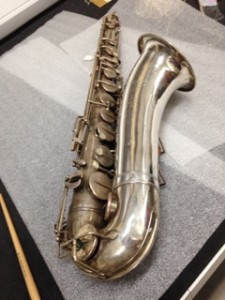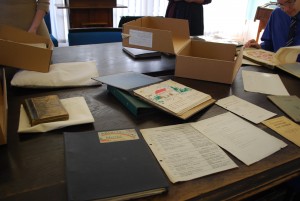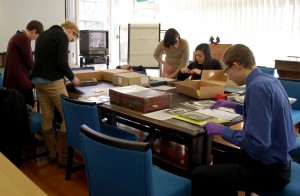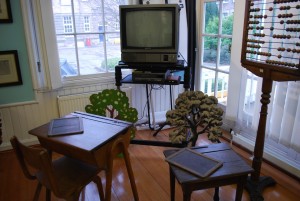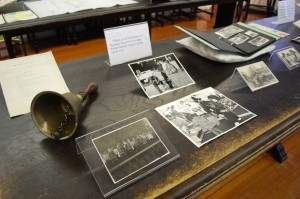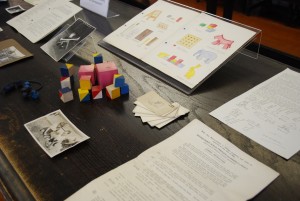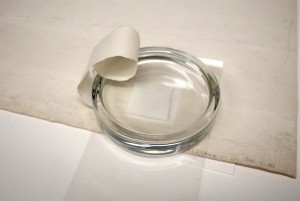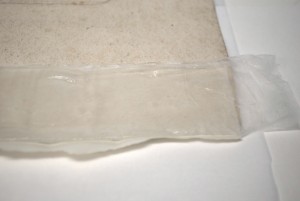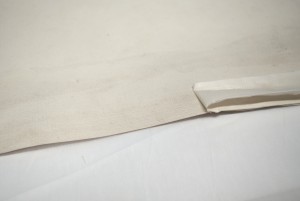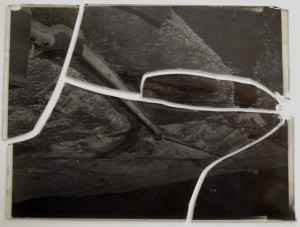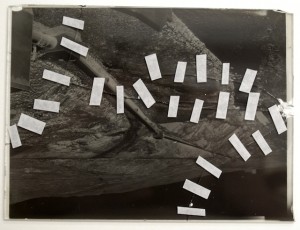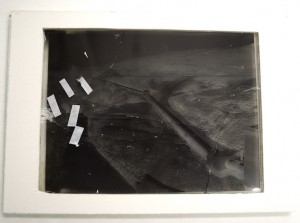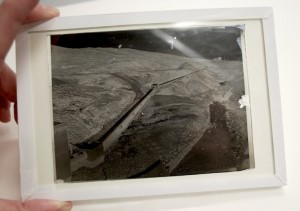I am a Preventive Conservation Masters student at Northumbria University, and as part of my course, I am fortunate to be able to put theory into practice for six weeks at The University of Edinburgh. Being a musician, and wanting to work with interesting composite objects, I was hankering after a chance to work with musical instruments. Having studied at Edinburgh Uni for the last 5 years, I knew it housed an amazing musical instrument collection and I relished an opportunity to go back! I have spent most of my first two weeks working with Jonathan Santa Maria Bouquet, the musical instruments conservator, and have had the task of cleaning a beautiful silver plated saxophone by Selmer for the upcoming Out of the Blue exhibition in the Main Library.
Having been taught repeatedly the reasons why metals and water should not mix, I was surprised when I was shown that the preliminary cleaning phase was water-based. However, I soon learnt that as long as each small area is dried carefully after the wet treatment, the water poses little threat. The abrasive agent used is calcium carbonate (precipitated chalk), which is mixed into water, and applied as a fine dispersion in the water – not as a paste – using cotton wool swabs and cotton rags. The idea is that the calcium carbonate is harder than the tarnish yet softer than the metal. It is still possible to scratch the silver so it is important to be gentle, and to use plenty of water, which seems counter-intuitive but really works.
water – not as a paste – using cotton wool swabs and cotton rags. The idea is that the calcium carbonate is harder than the tarnish yet softer than the metal. It is still possible to scratch the silver so it is important to be gentle, and to use plenty of water, which seems counter-intuitive but really works.
After working over the entire metal surface using this wet method, drying as I went, I used a microfibre cloth to remove any chalky residue and lastly a silver polishing cloth (which is impregnated with a sulphur scavenger which breaks down the tarnish chemically rather than physically) to get the hard-to-reach and stubborn areas clear of tarnish. The reason for such a thorough clean is that the last stage of the cleaning plan is a coat of microcrystalline wax for protection from re-tarnishing, under which you do not want to trap any dirt or tarnish. These treatments should mean that not only will the saxophone look fabulous on display, but that it will not need cleaning again (if kept in the right conditions) for a long time.
Other tasks so far have included wrapping musical instruments for long term storage, and starting out on an Integrated Pest Management system project with Emma Davey, which has involved visiting the National Trust Scotland offices to hear Preventive Conservator Mel Houston’s approaches to the challenges of monitoring insect pests over their numerous collection sites.
All in all a varied and exciting couple of weeks. Exactly what I came here for! More to come later in my placement, when I’ll be dealing with strings…
Post by Harriet Braine, Preventive Conservator Student Placement

